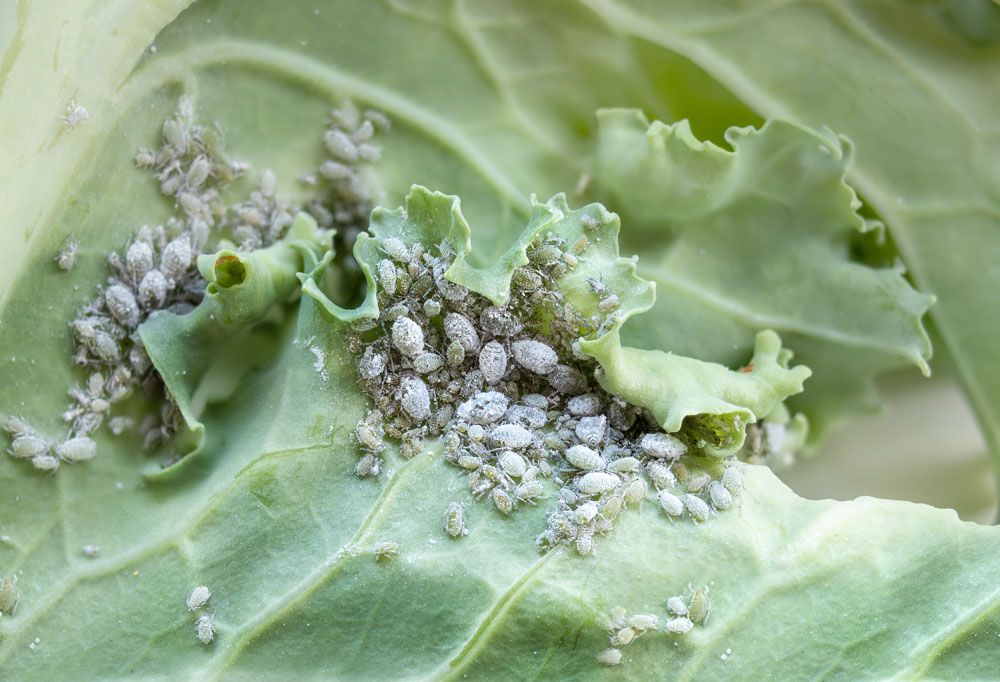
Cabbage Aphid – Brevicoryne brassicae
Cabbage Aphid: Appearance, Territory, Damage, and Life Cycle
Latin Name: Brevicoryne Brassicae
Appearance: One of the many aphid species that may be troublesome in canola crops is the cabbage aphid. They are a pervasive, imported pest that gathers in distinct, large-scale colonies on the canola blooming spikes in late winter and early spring. Cabbage aphids spread a variety of plant viruses that can seriously harm crops.
If you look at an aphid with a hand lens, you may notice two tiny pipes at the back of the insect called cornicles or siphunculi. With the exception of the turnip aphid Lipaphis erysimi, the cabbage aphid’s cornicles are noticeably shorter than those of other aphids. They may be distinguished from other aphids that may attack the plant by their small cornicles and waxy covering. Adults can be winged or wingless, with the latter having a black thorax.
Hosts Plants: Brussels sprouts, cabbage, kale, rutabaga, turnip
Territory: Wherever vegetables from the cabbage family are produced globally.
Damage Insect Cause: The newest leaves and blooming areas are where cabbage aphids love to feast. Additionally, they are located deep inside the heads of cabbage and Brussels sprouts. The aphid only consumes members of the Brassicaceae (Cruciferae) plant family, such as the weedy mustard that grows in and around fields.
Seedlings are rarely harmed by cabbage aphids. Following thinning or transplanting, their populations grow, and big colonies can then stunt or kill young plants. The crop contamination at harvest is their most significant economic impact. When aphids are numerous, it is challenging to reach them with pesticide sprays because leaves wrap around where they feed in dense, waxy colonies.
Conserve the natural predators that help manage cabbage aphids, but be aware that they might not always be effective. To lower aphid populations and protect other pests’ natural enemies, use cultural treatments and timely pesticide applications.
Life History and Habits: Aphids have two ways of reproducing. Females give birth to female nymphs without mating in warm climates. An aphid colony in this instance is all female. In temperate areas, this also happens during warmer months. However, as the temperatures start to fall in temperate areas throughout the autumn, the manner of reproduction alters. Females have mating interactions and deposit eggs. Aphids spend their winter in the egg stage. Up to 15 generations may overlap each other during the growing season. Depending on the climate, the complete life cycle might last anywhere from 16 to 50 days. At warmer temperatures, the life cycle is shortened.
